Comparative Enzymology of Cholinesterases
$119.95
IUL Biotechnology Series, 6
by Serge Moralev and Eugene Rozengart (Authors)
Edition: First
Book Details:
- Series: IUL Biotechnology Series
- Volume: 6
- Binding: Hardcover
- Pages: 500
- Dimensions (in inches): 1.25 x 9.5 x 6.50
- Publisher: International University Line
- Publication Date: March 9, 2007
- ISBN-10: 0-9720774-2-1
- ISBN-13: 978-0-9720774-2-2
- Price: $119.95
SERGE MORALEV and EUGENE ROZENGART Chapter 3. Chapter 4. Chapter 5. Chapter 6. APPENDICES 375 References 387 Index 441 Zoran Radič, Ph.D. and Palmer Taylor, Ph.D. Serge N. Moralev, Eugene V. Rozengart
COMPARATIVE ENZYMOLOGY OF CHOLINESTERASES
Contents
List of Tables ix
To Scientific Investigators in the Cholinesterase Field xvii
Foreword xix
Preface xxiii
Chapter 1.
Introduction 1
Chapter 2.
Specificity of Cholinesterases in Reaction with Substrates 15
2.1. Different Aspects of Substrate Specificity 16
2.1.1. Influence of Substrate Structure on Hydrolysis Rate by Cholinesterases 19
2.1.2. Influence of Substrate Structure on Nonproductive Binding of Substrate by Cholinesterases 47
2.1.3. Influence of Substrate Structure on Substrate Excess Inhibition of Cholinesterases 58
2.1.4. Influence of Substrate Structure on Reversible Inhibition of Cholinesterases 64
2.1.5. Influence of Substrate Structure on Irreversible Inhibition of Cholinesterases 71
2.2. Comparative Studies of Substrate Specificity in Cholinesterases of Different Origin 76
2.2.1. Substrate–Inhibitor Analysis 76
2.2.2. Variety of Substrate Specificity of Cholinesterases in Animal Kingdom 79
Specificity of Cholinesterases in Reaction with Reversible Inhibitors 99
3.1. Kinetics of Reversible Inhibition of Cholinesterases 101
3.2. Structure-Activity Relationships in Interaction of Reversible Inhibitors with Cholinesterases of Different Origin 105
3.2.1. Mono-Onium Compounds 106
3.2.2. Bis-Onium Compounds 146
3.3. Statistical Treatment of the Data on Reversible Inhibition of Different Cholinesterases 158
Specificity of Cholinesterases in Reaction with Irreversible Inhibitors 163
4.1. Kinetics of Irreversible Inhibition of Cholinesterases 165
4.1.1. “Pure” Irreversible Inhibition 165
4.1.2. Rates of Individual Reaction Stages 170
4.1.3. Combined Irreversible/Reversible Inhibition 174
4.2. Study of Cholinesterases of Different Origin by the Method of Inhibitor Analysis with Organophosphorus Inhibitors 198
4.2.1. Variation of Structure of the OPI Phosphoryl Part 200
4.2.2. Variation of Structure of the OPI Leaving Part 239
4.3. Variety of Irreversible Inhibitor Specificity of Cholinesterases in Animal Kingdom 289
4.4. Revealed OPI Structure-Activity Relationships in Light of Current Knowledge of Cholinesterase Active Center 308
4.4.1. The Active Center Areas, Interacting with OPI Phosphoryl Part 308
4.4.2. The Active Center Areas Interacting with OPI Leaving Part 316
Use of Cholinesterase Specificity for Identification of Inhibitors 323
Substrate–Inhibitor Specificity and Evolution of Cholinesterases 335
6.1. Elaboration of Taxonomic Belonging of Animals, Studying Substrate–Inhibitor Specificity of Their Cholinesterases 337
6.1.1. Inter- and Intraspecies Relationships within the Cephalopoda Order (Mollusca) 337
6.1.2. Interrelation of Taxons within Homoptera Order (Insecta) 342
6.1.3. Study of Divergence of Insect Cholinesterases by Cluster and Factor Analyses of Constants Values
of Their Interaction with Inhibitors 348
6.2. Statistical Analysis of Variability of Cholinesterases Active Center Structure 361
6.3. Molecular Phylogeny of Cholinesterases 367
6.4. Conclusion 372
A1. Equations for Evaluation of Individual Rate Constants of Two-Stage Irreversible Inhibition 377
A2. Calculation of the kb value 382
A3. Calculation of the lambda1 and lambda2 values 383
A4. Calculation of the k5 value 384
A5. Calculation of the k6 value 384
A6. Calculation of the k–5 value 384
To Scientific Investigators in the Cholinesterase Field:
Sincerely,
University of California, San Diego
La Jolla, California
Forerword
During the XIth Symposium on Cholinergic Mechanisms held in Saint Moritz, Switzerland, Serge N. Moralev acknowleged us with the Brestkin’s at al. book19 and the latest results in this area obtained in Russia. The idea of publishing an English book based on the summary of scientific resuts in the area of comparative enzymology of choliesterases, especially describing Soviet and Russian works mostly unknown to the Western reader, came from discussions with P. Taylor and Z. Radič, when it appeared, after reading, that there is a real mine of information, which is still of valuable interest to the scientific community. The present book written by S. N. Moralev and E. V. Rozengart is not an updated translation of the Russian edition of Brestkin’s et al. book. The text was completely recast, and the purpose of the book—mostly focused on the comparative study of the substrate–inhibitor specificity of cholinesterases—presents also new research approaches of the former Bretskin laboratory such as the use of conformational analysis in organophosphate inhibition studies as well as cluster and factor analyses in biochemical taxonomy and phylogeny.
Patrick Masson
La Tronche, France, August 2006
Preface
In the same time, in 1932, Lange and Krueger synthesized the first organophosphorus compounds (OPCs) with a P–F bonds. They experienced the toxic effects of OPCs themselves and even described them.3 Thus, the age of highly toxic OPCs began. In Germany intensive synthesis of organophosphorus poisons was carried out by a team of chemists led by Dr. Gerhard Schrader—Industrial production was organized at that time with an aim for preparation for chemical war.4 Similar studies were carried out in England, USA, and in the USSR. In the Soviet Union the chemistry of OPCs was extensively studied in Kazan scientific school directed by A. E. Arbuzov and Moscow scientific school of organoelement compounds led by A. N. Nesmeyanov and M. I. Kabachnik.4-6 Name of Arbuzov is associated with the basic synthetic methods in OPC chemistry (“Arbuzov’s rearrangement”).
The association between the toxic OPCs and ChE were discovered only in the beginning of the 1940s. During the war, the majority of academic institutions were evacuated from Moscow and Leningrad to Kazan where A. G. Ginetsinskiy, one of the well-known Russian physiologists, an expert in function of cholinergic systems, focused his research on organophosphorus poisons. Studying a great number of OPCs synthesized for the nonce by M. I. Kabachnik, Ginetsinskiy realized that the complete inhibition of a key enzyme of cholinergic transmission—acetylcholinesterase—is caused by OPC action.5 It worth to recall here a tragic episode in this OPCs study. A. G. Ginetsinskiy working in Kazan laboratory in 1942 had spilled an OPC preparation and temporarily lost his vision7 (the myotic action is one of typical attributes of heavy OPC poisoning).8 A few decades afterwards, scientific community discovered that several groups of researchers, in different countries, came almost simultaneously to the similar conclusion about OPCs action mechanism, being isolated from each other by national boundaries, lines of fronts of the Second World War, and the dense curtain of secrecy.4
The significance of A. G. Ginetsinskiy’s discovery is difficult to overestimate, since it was broadly applicable, not being only important for military toxicology. First, it made it possible to relate OPC structure to anticholinesterase action and to carry out the directed synthesis of effective inhibitors of ChE (organophosphorus inhibitors—OPIs). Second, testing ChE in various animals, researchers had an opportunity to forecast and obtain effectors with selective toxicity. The new age of organophosphorus insecticides and pharmaceuticals thus began. Third, it was a new stage in research of ChE itself. Using labeled OPIs, amino acid composition of the enzyme active center was revealed. The design of highly specific inhibitors stimulated kinetic studies of the cholinesterase catalysis. New tools became available for comparative research of properties of ChEs in various animals that are in different steps of evolutionary development. The fact that ChE is the target of OPI action has attracted much attention of synthetic chemists, physical chemists, biochemists, pharmacologists, and toxicologists.
A. G. Ginetsinskiy’s discovery was applied broadly in work by other Russian scientists. For example, V. I. Rozengart was one of the first biochemists in our country actively investigating direct action of OPI on ChE. V. A. Yakovlev made extremely important discovery having revealed that the inhibiting effect of OPIs is caused by phosphorylation of the ChE active center. M.Ya. Mikhel’son was one of the pioneers in the pharmacology of the toxic action of OPIs. A. P. Brestkin developed the kinetic bases of cholinesterase catalysis and interaction with OPIs. All these scientists worked afterwards in the I. M. Sechenov Institute of Evolutionary Physiology and Biochemistry (St. Petersburg), which established a leading role in the development of domestic research of cholinesterases.
Investigations of the catalytic properties of cholinesterases were carried out in our Institute in several laboratories headed in different periods by Professors V. A. Yakovlev, A. P. Brestkin, V. I. Rozengart, and A. E. Khovanskikh. More than 50 persons participated in different stages of this work.
These researches had two singularities: first, a broad set of topics, and second, extensive cooperation both with physiologists of our Institute and with researchers from other institutes through out the former Soviet Union—biochemists, pharmacologists, toxicologists, entomotoxicologists, and synthetic chemists.
Three directions of research have been selected:
1. Research of the kinetics of ChE interaction with various ligands. These studies were initiated by V. A. Yakovlev and A. P. Brestkin, chemists by higher education and experts in the field of chemical and enzymatic kinetics. Under their supervision, most aspects of cholinesterase catalysis—hydrolysis of substrates, inhibition of ChE activity by reversible inhibitors, and process of interaction of ChE with OPIs—were analyzed. Many of the derived kinetic equations, in our opinion, have not lost their significance to date.
Scientists of the department of general chemistry at the Sanitary and Hygiene Medical Institute led by A. P. Brestkin and of Tartu University (Estonia) directed by A. A. Aaviksaar, a member of National Academy of Sciences, Estonia, also participated in this work.
2. Research in the catalytic properties of cholinesterases in animals at different levels of evolutionary development. This direction was inured, on the one hand, by the evolutionary and comparative biological profile of our Institute, and, on the other hand, focused by applied research—searching for the bases of directed synthesis of highly effective and selective agents for plant protection. Cholinesterases from more than 60 animal species—vertebrates, arthropods, and mollusks—were studied.
In our Institute, the comparative research of cholinergic systems in various animals was carried out also at the laboratory of pharmacology (headed first by Professor M. Ya. Mikhel’son, then by Professor A. F. Danilov, and now by Professor N. Ya. Lukomskaya) and at the laboratory of neurophysiology (headed previously by Professor A. K. Voskresenskaya and now by V. L. Sviderskiy, a member of Russian Academy of Sciences). Scientists of the Institute of Plant Protection in St. Petersburg directed by K. V. Novozhilov, a member of Russian Academy of Agricultural Sciences, department of biochemistry of the Turkmenia Medical Institute in Ashkhabad headed by Professor A. M. Kulieva, laboratory of technical biochemistry of the Pacific Institute of Fish Facility and Oceanography in Vladivostok headed by Professor L. M. Epshteyn, and, to a lesser degree, of other institutions participated in comparative studies of ChE in various animals as well.
3. Research of relationships between structure and activity of various effectors of cholinesterases. Structure-activity relations of a large number of substrates and reversible and irreversible (organophosphorus and carbamate) inhibitors were investigated. The most modest estimates of their total number give more than 1.5 thousands compounds.
Teams of synthetic chemists from various regions of former Soviet Union perennially collaborated in this work. The laboratories led by a member of Russian Academy of Sciences M. I. Kabachnik, corresponding member of the Russian Academy of Sciences T. A. Mastryukova, and Professor N. N. Godovikov (A. N. Nesmeyanov Institute of Organoelement Compounds, Moscow), a member of Russian Academy of Medical Sciences N. V. Khromov-Borisov (Institute of Experimental Medicine, St. Petersburg), Professors S. G. Kuznetsov and S. M. Ramsh (Institute of Toxicology, St. Peters-burg), Professor N. K. Skvortsov (Technological Institute, St. Petersburg), a member of Russian Academy of Sciences M. G. Voronkov (A. E. Favorskij Institute of Organic Chemistry, Irkutsk, Russia), a member of National Academy of Sciences A. A. Abduvakhabov (A. S. Sadykov Institute of Organic Chemistry, Tashkent, Uzbekistan), Professor L. M. Yagupol’skiy (Institute of Organic Chemistry, Kiev, Ukraine), and a member of National Academy of Sciences A. A. Aaviksaar (Tartu University, Estonia) participated in this integration of chemistry and enzymology. The method of theoretical conformational analysis to study interaction of the ligands with the ChE active center was developed for the first time in our country in our institute in collaboration with colleagues from laboratory of molecular physiology (led by a member of Russian Academy of Sciences V. A. Govyrin, and now by Professor A. I. Krivchenko).
This direction of research was bound tightly with a comparative enzymology. Many compounds were investigated in reaction of interaction not only with “typical” mammalian ChEs—human erythrocyte AChE and horse blood serum BChE (in collaboration with the department of biochemistry of First I. P. Pavlov Medical Institute at St. Petersburg headed previously by Professor V. I. Rozengart and now by Professor I. G. Shcherbak)—but also with ChEs of other vertebrates as well as with ChEs from various insects (in collaboration with Institute of Plant Protection) and mollusks (in collaboration with Pacific Institute of Fish Facility and Oceanography).
This large concerted group of like-minded collaborators that was gradually evolved from the end of 1940s worked successfully and fruitfully during more than 40 years. Results of their work were published in many monographs8-20 and large reviews. Despite our desire, we are not able to cite all of the obtained data within the framework of this book. Therefore we shall condense data in tables, with accompaning brief analysis and discussion from the point of view of the modern data on structure of ChE active center and the mechanism of cholinesterase catalysis.
The catalytic properties of the mammalian AChE and BChE in reactions with substrates and reversible and irreversible inhibitors of various structure are considered in Chapters 1–4. We also summarized the data on the substrate and inhibitor specificity of ChEs in different animals.
We did our best in such an attempt, but we have to note that, unfortunately, not all appropriate papers in Western journals were available for us).
In Chapter 5 the theoretical basis and practical examples for identification of irreversible and reversible inhibitors using cholinesterase specificity are presented.
The Chapter 6 is devoted to discussion about the cholinesterases substrate–inhibitor specificity in a evolutionary aspect.
We used these numerous data as a “raw material” for statistical processing. Multidimensional methods dominate among current methods of statistical data analysis and allow to cover simultaneously a broad spectrum of parameters and their relations elucidating their basic principal associations. Such a reduced number of parameters is easier for the constructive perception and further analysis than the multidimensional space of initial parameters. This is fully related to many biological characteristics including general “reactivity” of enzymes, which is by its virtue a multidimensional score function and cannot be measured directly.
We hope that the data summarized in this book and the results obtained by their statistical analysis would be useful for understanding mechanisms of cholinesterase catalysis, for studing comparative enzymology of ChE, and for searching new highly effective and highly selective insecticides and drugs.
St. Petersburg, Russia, August 2006
Cited References
1. Augustinsson K-B. Classification and comparative enzymology of the cholinesterases, and methods for their determination. In: Cholinesterases and anticholinesterase agents. Handbuch der experim. Pharmakologie, Vol. 15, Koelle GB, ed. Berlin – Goettingen – Heidelberg: Springer-Verlag, 1963, pp. 89–129.
2. Long JP. Structure-activity relationships of the reversible anticholinesterase agents. In: Cholinesterases and anticholinesterase agents. Handbuch der experim. Pharmakologie, Vol. 15, Koelle GB, ed. Berlin – Goettingen – Heidelberg: Springer-Verlag, 1963, pp. 374–427.
3. Lange W and Krueger G von. Ueber Ester von der Monofluorphosphorsaure. [On ester of monofluorophosphoric acid]. Ber dtsch chem Ges 1932, 65:1598–1601. [In German.]4. Holmstedt BO. Structure-activity relationships of the organophosphorus anticholinesterase agents. In: Cholinesterases and anticholinesterase agents. Handbuch der experim. Pharmakologie, Vol. 15, Koelle GB, ed. Berlin – Goettingen – Heidelberg: Springer-Verlag, 1963, pp. 428–485.
5. Kabachnik MI. Fosfororganicheskie fiziologicheski aktivnye veshchestva (Mekhanizm deystviya i ratsional’nye puti poiska) [Organophos-phorus physiologically active compounds (Mechanism of action and rational ways to search)]. Vestn AN SSSR 1964, 10:60–68. [In Russian.]6. Kabachnik MI. Vliyanie fosfororganicheskikh veshchestv na peredachu nervnogo vozbuzhdeniya [Influence of organophosphorus substances on transmission of nervous stimuli]. Vestn AN SSSR 1968, 5:86–94. [In Russian.]7. Ginetsinskaya TA. Sluzhitel’ Muz i Eskulapa [Minister of Muses and Aesculapius]. St. Petersburg, 1995, pp. 80–82. [In Russian.]8. Golikov SN and Rozengart VI. Farmakologiya i toksikologiya fosfororganicheskikh soedineniy [Pharmacology and toxicology of organophosphorus compounds]. Leningrad: Medgiz. 1960, 111 pp. [In Russian.]9. Rozengart VI. Khimiya zhizni [Chemistry of life]. Leningrad: Medgiz. 1960, 64 pp. [In Russian.]10. Golikov SN and Rozengart VI. Kholinesterazy i antikholinesteraznye veshchestva [Cholinesterases and anticholinesterase compounds]. Leningrad: Meditsina, 1964, 382 pp. [In Russian.]11. Golikov SN and Zaugol’nikov SD. Reaktivatory kholinesteraz [Reactivators of cholinesterases]. Leningrad: Meditsina, 1970, 166 pp. [In Russian.]12. Yakovlev VA. Kinetika fermentativnogo kataliza [Kinetics of enzymatic catalysis]. Moscow: Nauka, 1965, 248 pp. [In Russian.]13. Kabachnik MI, Brestkin AP, Godovikov NN, Michelson MJ, Rozengart EV, and Rozengart VI. Hydrophobic areas on active surface of cholinesterases. Pharmacol Rev 1970, 22:335–388.
14. Brestkin AP, Brick IL, and Grigor’eva GM. Comparative pharmacology of cholinesterases. In: Intern Encycl Pharmacol Therap, Sec. 85, V .1, Michelson MJ, ed. Oxford – New York: Pergamon Press, 1973, pp. 241–344.
15. Sadykov AS, Rozengart EV, Abduvakhabov AA and Aslanov KhA. Kholinesterazy. Aktivnyy tsentr i mekhanizm deystviya [Cholinesterases. Active center and mechanism of action]. Tashkent: Fan, 1976, 208 pp. [In Russian.]16. Rozengart VI and Sherstobitov OE. Izbiratel’naya toksichnost’ fosfororganicheskikh insektoakaritsidov [Selective toxicity of organophosphorus insecticides and mitecides]. Leningrad: Nauka, 1978, 174 pp. [In Russian.]17. Rozengart VI. Fermenty – dvigateli zhizni [Enzymes—engines of life]. Leningrad: Nauka, 1983, 160 pp. [In Russian.]18. Abduvakhabov AA, Sadykov AS, Dalimov DN, and Aslanov KhA. Alkaloidy i ikh proizvodnye kak instrument dlya izucheniya kholinergicheskoy sistemy [Alkaloids and their derivatives as tools to study cholinergic system]. Tashkent: Fan, 1984, 288 pp. [In Russian.]19. Brestkin AP, Kuznetsova LP, Moralev SN, Rozengart EV, and Epshtein LM. Kholinesterazy nazemnykh zhivotnykh i gidrobiontov [Cholinesterases of terrestrial animals and hydrobionts]. Vladivostok, 1997. 466 pp. [In Russian.]20. Ramsh SM and Petrov AN. Podkhody k ratsional’nomu konstruirovaniyu obratimykh ingibitorov atsetilkholinesterazy v kachestve sredstv dlya lecheniya bolezni Al’tsgeimera [Approaches to rational design of reversible inhibitors of acetylcholinesterase to treat Alzheimer disease]. St. Petersburg: St. Petersburg State Chemical-Pharmaceutical Academy, 1999, 98 pp. [In Russian.]28. Ashani Y, Radic Z, Tsigelny I, Vellom DC, Pickering NA, Quinn DM, Doctor BP, and Taylor P. Amino acid residues controlling reactivation of organophosphonyl conjugates of acetylcholinesterase by mono- and bisquaternary oximes. J Biol Chem 1995, 270:6370–6380.
29. Hosea NA, Berman HA, and Taylor P. Specificity and orientation of trigonal carboxyl esters and tetrahedral alkylphosphonyl esters in cholinesterases. Biochemistry 1995, 34:11528–11536.
40. Hosea, N.A., Radic, Z., Tsigelny, I., Berman HA, Quinn DM, and Taylor P. Aspartate 74 as a primary determinant in acetylcholinesterase governing specificity to cationic organophosphonates. Biochemistry 1996, 35:10995–11004.
48. Bourne Y, Taylor P, Radic Z, and Marchot P. Structural insights into ligand interactions at the acetylcholinesterase peripheral anionic site. EMBO J 2003, 22:1–12.
60. Rozengart EV, Basova NE, Moralev SN, and Khovanskikh AE. Influence of the substrate structure on the mechanism of reversible inhibition of cholinesterases of different origin. J Evol Biochem Physiol 2000, 36:390–397.
93. Yamada M, Marui Y, Hayashi Ch, Miki Y, and Takemura Sh. New thiocholine ester substrates for the assay of human serum cholinesterase. Clin Chem 2001, 47:1962–1966.
145. Nicolet Y, Lockridge O, Masson P, Fontecilla-Camps JC, and Nachon F. Crystal structure of human butyrylcholinesterase and of its complexes with substrate and products. J Biol Chem 2003, 278:41141–41147.
150. Moralev SN and Rozengart EV. “Substrate inhibition” is one of the aspects of substrate specificity in vertebrate and invertebrate cholinesterases. J Evol Biochem Physiol 2001, 37:469–491.
456. Li F and Han Z. Mutations in acetylcholinesterase associated with insecticide resistance in the cotton aphid, Aphis gossypii Glover. Insect Biochem Mol Biol 2004, 34:397.
457. Pezzementi L, Rowland M, Wolfe M, and Tsigelny I. Inactivation of an invertebrate acetylcholinesterase by sulfhydryl reagents: The roles of two cysteines in the catalytic gorge of the enzyme. Invertebrate Neuroscience 2006, 6:57–74.
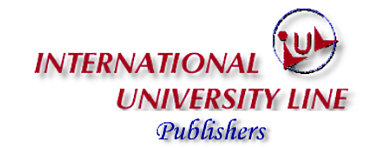
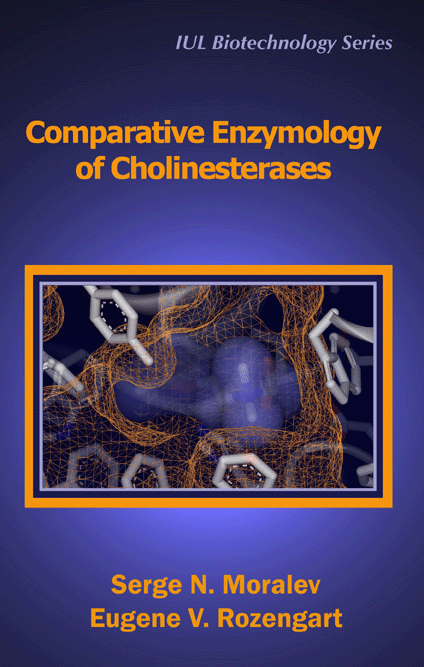
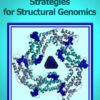


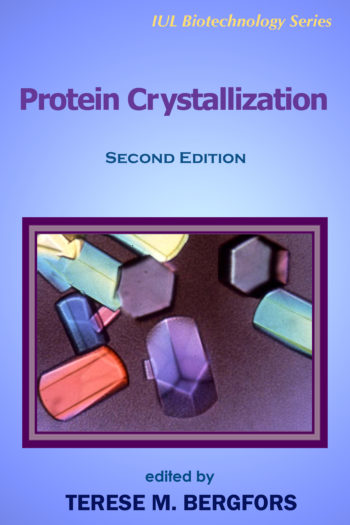


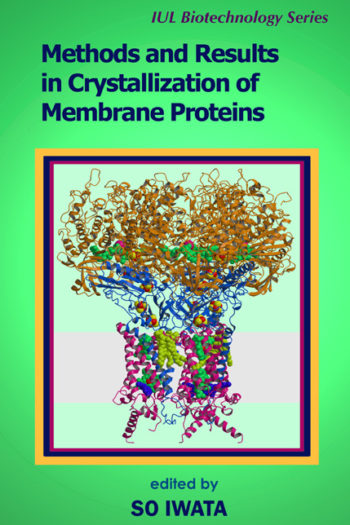
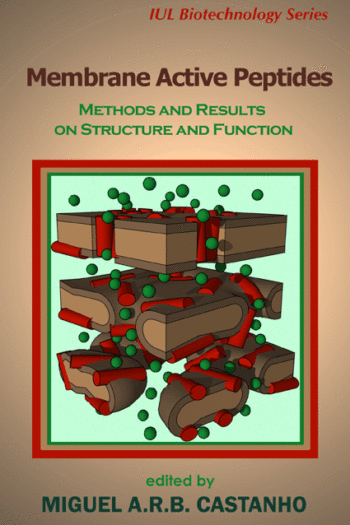
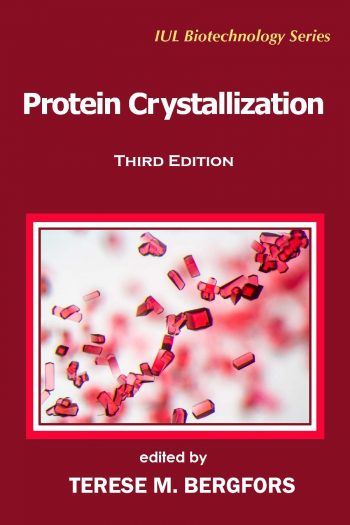

Dr. Leo Pezzementi –
Birmingam-Southern College, Alabama
It has been more than thirty years since a book on cholinesterases of the ambitious scope and magnitude of Comparative Enzymology of Cholinesterases by S.N.Moralev and E.V.Rozengart has been available to Western readers. The previous book to which I refer, Biology of Cholinesterases by Ann Silver, was published in 1974 and synthesized much of the biological work in the field at that time. However, it was printed just before the discovery of the multiple molecular forms of cholinesterases and well ahead of the advent of cholinesterase molecular biology. Nevertheless, the book was a source of information, ideas, and inspiration for a generation of cholinesterase researchers. As a newcomer to the field at the time, who was interested in the structure, function, and evolution of cholinesterases, I found the comparative biological approach of Silver particularly valuable. It is well past time for a similarly comprehensive text summarizing the advancements in the research of cholinesterase over the past thirty years to be published. Moralev and Rozengart have responded to this need in a comprehensive book that reflects the changing times and the changing methodologies of cholinesterase research. The authors again take a comparative approach to cholinesterase research, but this time from a molecular/biochemical point of view rather than from a biological point of view. They synthesize a wide range of results from kinetics, pharmacology, and molecular biology, and apply these results to an investigation of the structure, function, and evolution of the cholinesterases in the vertebrates and the invertebrates. The authors consider the effect of substrate structure on substrate specificity and inhibition, and how these different inhibitors can be used alone and in conjunction with reversible and irreversible inhibitors to probe the various sub-sites of the active site of various cholinesterases.
Dr. Patrick Masson –
Centre de Recherches, La Tronche, France
The authors have to be congratulated for their comprehensive synthesis of a considerable body of scattered works. This book has to be regarded as a reference book and a source of information. We hope that it will be useful to students entering the field of cholinesterase research, and that it will be a valuable guide for enzymologists, molecular pharmacologists, and toxicologists aware of the usefulness of experimental approaches in rational drug research and enzyme engineering.
Drs. Zoran Radič and Palmer Taylor –
University of California, San Diego
Over the years, several textbooks on cholinesterases have become widely accepted and used as references in this field. Dr. Ann Silver comprehensive book Biology of Cholinesterases, published in 1974, and Drs. Norman Aldridge and Elsa Reiner elegant text Enzyme Inhibitors as Substrates, with focus on enzyme kinetics, published in 1972, are prime examples. The Moralev and Rozengart Comparative Enzymology of Cholinesterases should join this list of comprehensive treatises and fill the interdisciplinary gap between the integrated biology of cholinesterase actions and their kinetic mechanisms. It covers structural and mechanistic data on cholinesterase enzymes from a wide variety of living species and their interactions with a diverse and original collection of substrate and inhibitor compounds.